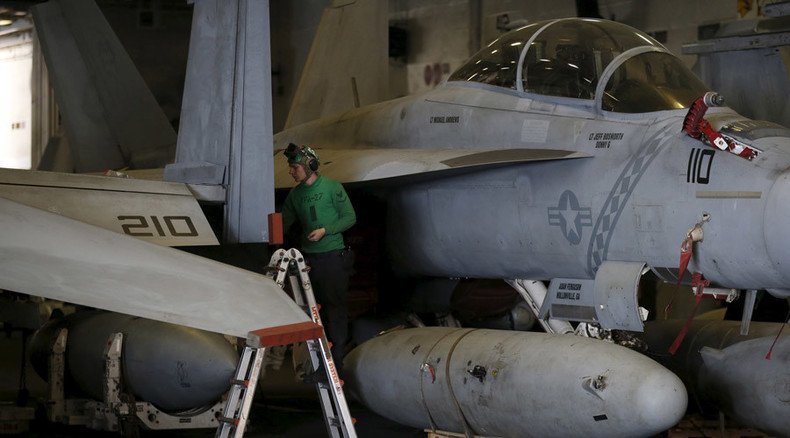America is losing its hard power due to years of poor funding. Two of its four service branches tasked with foreign missions have degraded on a five-point scale over the past year, a report by an influential think tank says.
The US is unable to meet its long-time goal of being able to fight two major regional wars simultaneously and the situation is getting worse, said the “2016 Index of US Military Strength,” released last week by the Heritage Foundation.
READ MORE: War game whoops! NATO exercises end with hovercraft, Humvees stuck in sand (VIDEO)
The annual assessment details the state of the military itself, their operational environment and the level of global threats to US interests. Since 2014, the military has lost some of its strength while the threats have become more significant, the report said.
“The US does not have the right force to meet a two–major regional contingency requirement and is not ready to carry out its duties effectively,” said the Heritage Foundation, which is often critical of the Obama administration. “Consequently, the US risks seeing its interests increasingly challenged and the world order it has led since World War II undone.”
The assessment seems to mirror the Pentagon’s own views. DoD’s 2014 Quadrennial Defense Review modified its two-war demand, saying the US military should “be capable of defeating a regional adversary in a large-scale multi-phased campaign, and denying the objectives of – or imposing unacceptable costs on – a second aggressor in another region.”
The Heritage Foundation noted significant decline in two services of the armed forces. The Army’s power, which was assessed as “marginal” last year, has now been downgraded to “weak”. The Air Force used to be “strong” but is now only “marginal” on a par with The Navy and the Marine Corps as well as the US nuclear deterrence, which is rated in the index alongside the four branches. The Coast Guard is excluded from the rating.

“The shift in two services—the Army and Air Force—to a lower category in the course of a single year is surprising and should be seen as evidence of the rapidly accumulating effects of inadequate funding during a time of higher operational demand and policies that have traded long-term health for near-term readiness,” the index said.
The Army’s downgrade is explained by the cuts in the number of brigade combat teams (CBT) from 38 to 32. The service would need 42 brigades available for use if it were called to fight two wars at once.
READ MORE: Arms industry darling hosts event for GOP candidates
“Actual readiness is therefore likely dangerously close to nearing a state of ‘very weak,’ [the worst in the rating]” the Heritage Foundation concluded.
The Air Force is the only service that won the highest “very strong” rank for its capacity, having over 1,110 fighter aircraft available. But it ranked marginal in capability and readiness, having lost a notch in the latter category since last year’s index. This degradation in readiness resulted in the decline of its aggregated rating.
At the same time, threats to US interest are increasing. The Heritage Foundation named Russia and China as primary concerns due to the investments the two countries are putting into modernizing their military. Still both are ranked as second-worst “strong” threats, the same as terrorist groups in Afghanistan and Pakistan.
The only threat to score the highest “severe” level is North Korea, which may lack the conventional military strength, but “possesses nuclear weapons capable of reaching US facilities and America’s critical security and economic partners in the region,” the think-tank said. North Korea is also the only actor assessed as “hostile” rather than just “aggressive” towards the US. Middle Eastern terrorist groups like the Islamic State and the nation of Iran are ranked as “elevated” threats by the index.
Luckily for the US, its military operates in an overall “favorable” environment, according to the index, thanks to decades of building alliances and military infrastructure around the world. The Middle East is the only crucial region with a “moderate” situation, mostly due to lack of political stability there.

